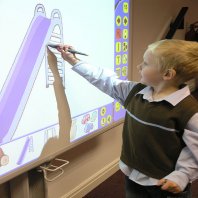
Yesterday I introduced some teachers to the five minute lesson plan (http://teachertoolkit.me/the-5-minute-lesson-plan) while discussing lesson planning and it got me thinking about my earlier post on simplicity (http://educationandtechnology.me/?p=97 ). This time however rather than thinking about lesson planning, it got me thinking about assessment or the different types of assessment; formative assessment, summative assessment and assessment for learning, baseline assessment (You may normally refer to it as baseline testing however testing, in my eyes, is just another word for assessment) or standardised assessment. I suspect there are others although as I write this they do not immediately jump to mind.
As De Bono (1998) points out, “things evolve to become ever more complex – not more simple.” He goes on to say that “those who have got used to the complexity no longer notice it and even add more elements, so increasing the complexity even further.” So are these different types of assessment the product of this evolution and does this added complexity actually help us as teachers or the students we teach? Can we truly differentiate between each different type of assessment? Do the supposed distinctions between each actually exist? Do we really need to have these different types of assessment?
Thinking about it, the first question which I find myself asking is: What is the purpose of assessment or what is assessment as a whole? A quick look at the definition via Google gives use the following
assessment; the action of assessing someone or something.(https://www.google.ae/#q=definition+assessment)
assess; evaluate or estimate the nature, ability, or quality of.(https://www.google.ae/#q=definition+assessing)
So assessment in educational terms could be considered as evaluating or estimating a students ability, nature, skills, knowledge, etc. This definition sounds very much in line with the concept of teachers “knowing” their individual students. As such I think it might be fair to say that assessment is a process which allows teachers to “know” their students whether it be to find out about students at the start of their time in a school, at the start of the year, as they make progress during the year or during a lesson, or to find out where they are at the end of a topic or at the end of the year. Basically a good teacher needs to “know” their students in order to best facilitate them with the most appropriate learning opportunities. Assessment is the process for doing this and regular assessment is needed to cope with the fact that students are constantly developing and changing as they progress through their time within education.
So do the distinctions of formative, summative and assessment for learning, which are designed to make the concept easier to understand, actually help. Personally I would say, no. It doesn’t matter whether your assessment is formative, summative or AfL. All that truly matters is do you as a teacher “know” your students and are you using assessment to inform you about them, and the progress they make as they change and develop during their time within education. We need to look at assessment in a broader sense in order to “free ourselves from the constraints of what is being done” and find a simpler and possibly better way.
References:
De Bono. E. – 1998, Simplicity, Penguin Books
Image from http://www.freedigitalphotos.net : “Answer Sheet” by nongpimmy







